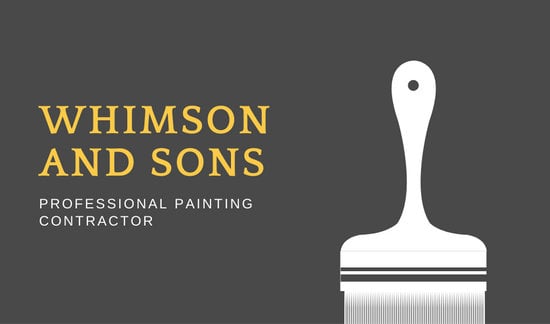The Influence Of Weather Condition On Commercial Painting Projects
The Influence Of Weather Condition On Commercial Painting Projects
Blog Article
Post Created By-Lundgreen Ehlers
When you're taking care of a commercial paint job, you can not ignore exactly how weather condition plays a crucial function in your success. Elements like temperature level, humidity, and wind can either enhance or weaken your efforts, impacting whatever from application high quality to safety at work site. You may believe you can repaint anytime, but the truth is that certain problems can result in expensive hold-ups or poor coatings. Recognizing these aspects is vital, but what certain approaches can you carry out to guarantee optimal outcomes among unpredictable weather condition?
Temperature and Paint Application
When it involves commercial paint, temperature level plays an essential duty in how well the paint adheres and dries. If you're preparing a job, keep an eye on the temperature level range advised by the paint supplier. Ideally, apartment painting service want to work within that variety for ideal outcomes.
When temperature levels are as well low, paint can end up being thick and tougher to apply, leading to irregular coverage. You might find yourself dealing with brush strokes or roller marks that just will not go away.
On the flip side, high temperatures can create paint to dry as well promptly. This can result in issues like cracking or peeling, as the paint does not have sufficient time to bond effectively to the surface area.
If it's also warm, consider scheduling your work for cooler parts of the day, such as morning or late afternoon.
Moisture and End Up Top Quality
Humidity dramatically influences the surface top quality of commercial paint tasks. When moisture degrees are high, moisture in the air can interfere with the drying procedure of paint. This can lead to concerns like bad bond, unequal coatings, and raised drying times.
You may find that your paint takes longer to cure, which can postpone your task timeline.
On https://www.goodhousekeeping.com/home/renovation/tips/a31753/painting-cabinet-mistakes/ , reduced moisture can likewise present troubles. If the air is also dry, paint can dry too promptly, stopping appropriate leveling and leading to a harsh surface. You desire your paint to move smoothly, and fast drying out can impede that, leaving you with an unacceptable surface area.
To attain the best coating, aim for humidity degrees in between 40% and 70%. This array enables optimum drying out problems, ensuring that the paint adheres well and degrees out properly.
Think about utilizing dehumidifiers or followers to control wetness in indoor projects, and attempt to plan exterior projects for days when moisture is within the optimal array. By focusing on moisture, you can enhance the final appearance and toughness of your industrial paint work.
Wind and Outdoor Problems
While you mightn't think of wind as a major element, it can substantially impact the end result of exterior business painting jobs. High winds can interrupt your application procedure, causing paint to completely dry also promptly. When repaint dries as well fast, it can result in an uneven finish or visible brush strokes.
You'll also encounter challenges with paint overspray, as wind can lug particles far from the desired surface area, causing lost products and potential damages to surrounding locations.
Moreover, strong gusts can create safety and security hazards on duty site. Ladders and scaffolding are more vulnerable to tipping in windy conditions, placing your team at risk. It's crucial to check wind speeds before starting a project. If winds surpass risk-free restrictions, it's ideal to postpone your work to make certain a top quality coating and keep safety and security.
On calmer days, you can benefit from the best conditions to achieve smooth, professional results. Always inspect the weather forecast and plan accordingly.
Final thought
To conclude, recognizing just how weather condition impacts industrial paint is critical for accomplishing the very best outcomes. By checking temperature, humidity, and wind conditions, you can arrange your jobs during optimal times. This not just ensures a smooth application yet also improves the quality of your surface. So, watch on the forecast and plan appropriately-- doing so will conserve you time, cash, and irritation while delivering a professional result every time you paint.
